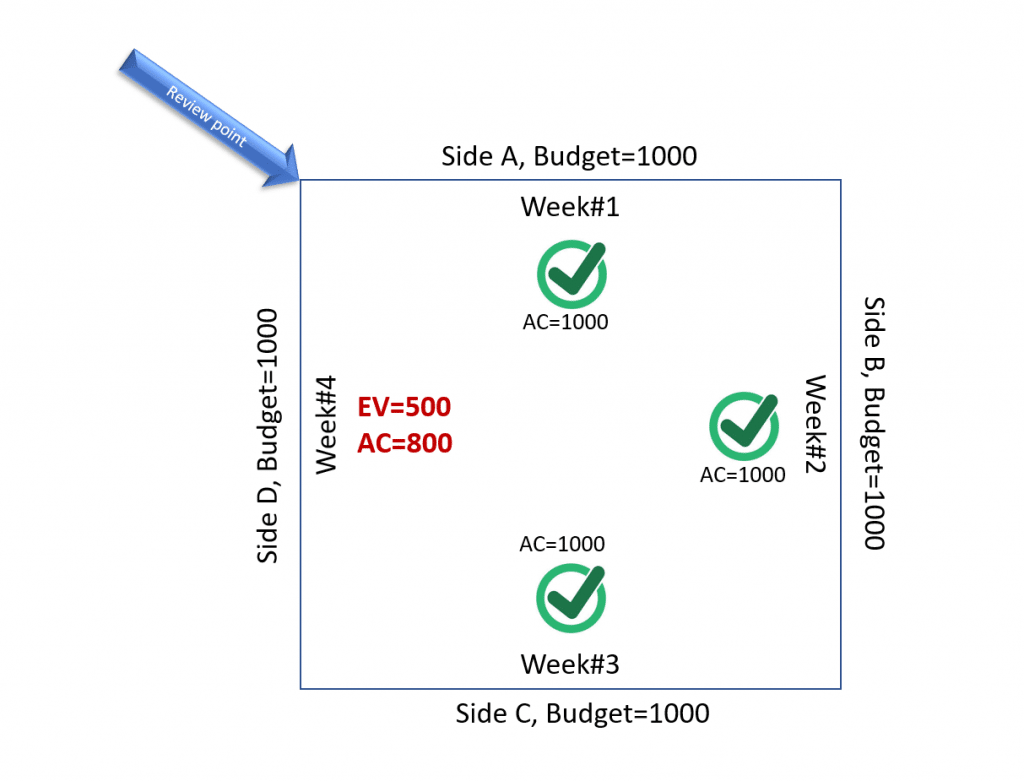When is Earned Value Management (EVM) applicable?
We say: in every single construction project.
We are not the only ones who think so. The Association for the Advancement of Cost Engineering (AACE), being more function and detail-oriented, addresses this at length in their Recommended Practices.
AACE defines two key concepts in Earned Value Management (EVM):
- Measurable work progress
- A focus on planning to establish the performance measurement baseline (PMB) against which performance will be tracked and evaluated.
Key benefits of Earned Value Management
- Earned value management is easy to understand.
- It simplifies project management. Just by focusing on a handful of ratios project stakeholders can check the health of their projects.
- It is scalable. Earned value management can be applied at a project level, program level and even at a portfolio level. It can be applied at multiple locations.
- The forecasting ability of the earned value management system helps project managers to be more proactive.
- Project managers can practice management by exceptions
- No more waiting for project status information – Earned value management systems supported by automated Project Management Information Systems can provide the status of the project at the press of a button.
Building blocks of Earned Value Management
- Define Work Breakdown Structure
- Identify Organizations
- Integrate Sub-systems
- Identify Overhead control
- Integrate Work breakdown structure and the Organization breakdown structure
What is Earned Value Management? and Why is it so useful as a measuring and monitoring tool?
Consider this example:
Scope of the project: This project comprises of laying a fence around a square plot of size 1 km on each side (A, B, C, D). Each side has a budget of 1000. The work is supposed to get over on the 4th week. The surveyor is conducting the survey to assess the progress after 4 weeks from the start date.

Side A, Side B, Side C are fully completed.
The Budgeted Cost of Work Scheduled BCWS(A), which is also known as the Planned Value (PV) for A = 1000$
Since ‘A’ got over, the Budgeted Cost of Work Performed BCWP (A), which is also known as Earned Value (EV) for ‘A’ = 1000$. The Actual cost (AC) incurred to complete side A = 1000$.
In the case of side ‘B’, PV=1000, AC=1000.
For Side ‘C’, PV=1000, EV=1000, AC=1000
And for Side ‘D’, PV=1000, EV=500, AC=800
Now let us consider the cumulative values for the project;
Planned Value (EV) = Budgeted Cost Of Work Scheduled (BCWS) = 4000
Earned Value (EV) = Budgeted Cost Of Work Performed (BCWP) = 3500
Actual Cost (AC) = Actual Cost Of Work Performed (ACWP) = 3800
Schedule Variance (SV) = EV-PV = 3500 – 4000 = -500
Schedule Variance % = (EV-PV) / PV *100 = -500 / 4000 *100 = -12.5%
Schedule Performance Index (SPI) = EV/PV = 3500 / 4000 = 0.875
Cost Variance (CV) = EV-AC = 3500 – 3800 = -300
Cost Performance Index (CPI) = EV / AC = 3500 / 3800 = 0.921
Estimate At Completion (EAC) = AC+( BAC – EV ) / CPI = 3800 + (4000 – 3500) / 0.921 = 3800+542.8 = 4,342
“Throughout the project if we can maintain a CPI and SPI which is greater than or equal to 1, then the project is doing well schedule wise and cost wise.”
The ‘S’ Curve
The ‘S curve’ is widely used in project management to track the project. At regular intervals they plot the Planned Value (PV), Earned Value (EV) and the Actual Cost (AC) .
- If SPI=1 and CPI=1, then all these curves would have intersected at PV.
- The Budget at Completion (BAC) is the sum of ‘PV’ of all the work from start of the project till the end.
- Based on these data, it is possible to forecast the Estimate at Completion (EAC)
- EAC = AC + (BAC-EV) / CPI (Assumption, the nature of the work is same)
Conclusion
- A Schedule Performance Index (SPI) =>1 indicates the project is doing well schedule wise
- A Schedule Performance Index (SPI) < 1, indicates that the project is lagging behind schedule wise
- If the Cost Performance Index (CPI) >=1, indicates that the work is getting completed within budget
- A Cost Performance Index (CPI) < 1 indicates that we have spent more than planned for the completed work.
Hope this gives a brief introduction about how EVM works. Of course, knowing this in theory is one thing, applying it is another. That’s why EVM is now part of the WRENCH philosophy and built into all our project management and monitoring solutions. In fact, based on customer feedback, we would go so far as to say that WRENCH is the only way for companies to successfully apply the principles of EVM in real life projects.
Read further
Bullet proofing earned value management
EVM Progress monitoring using ‘S’ curves and Histograms
Earned Value project management simplified
See you soon!